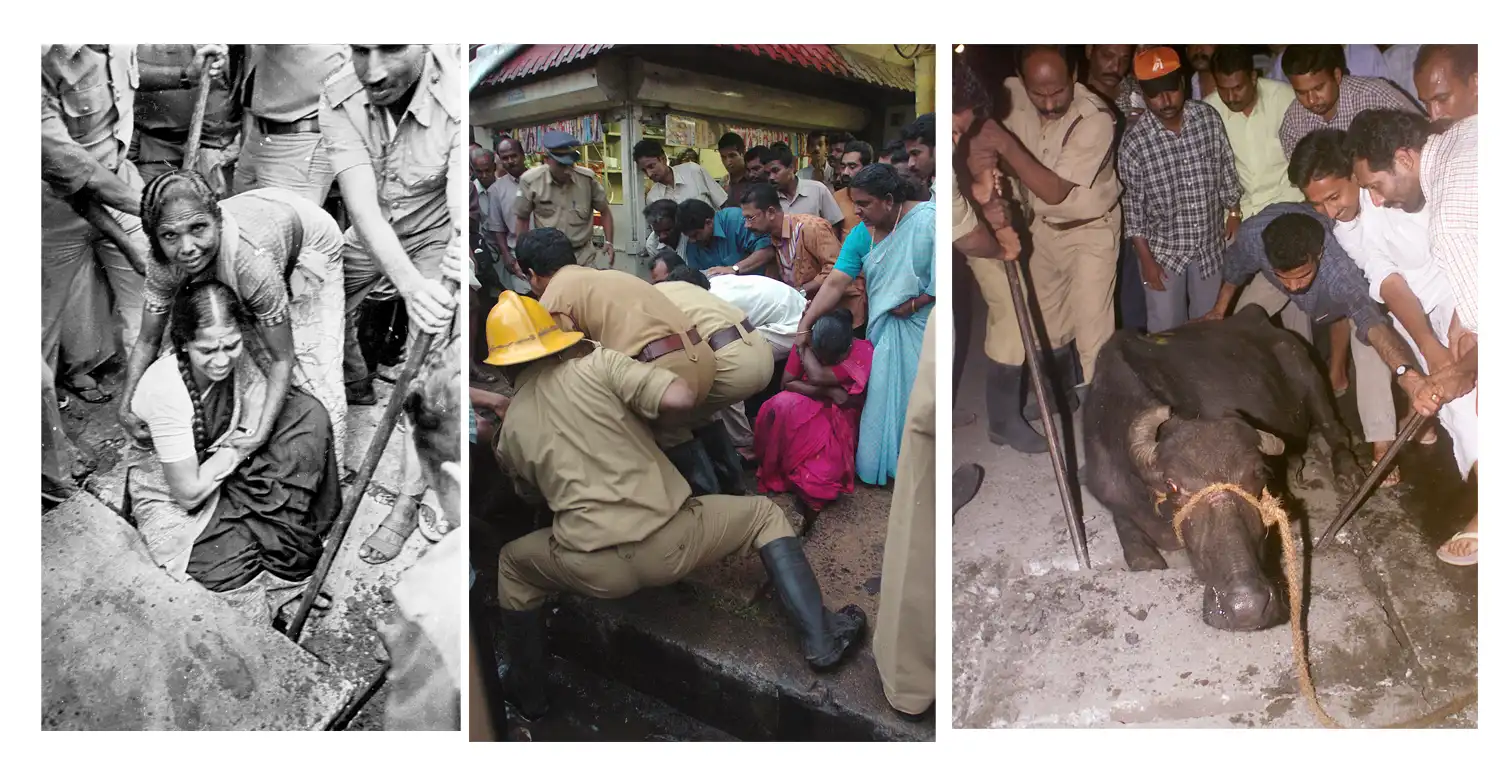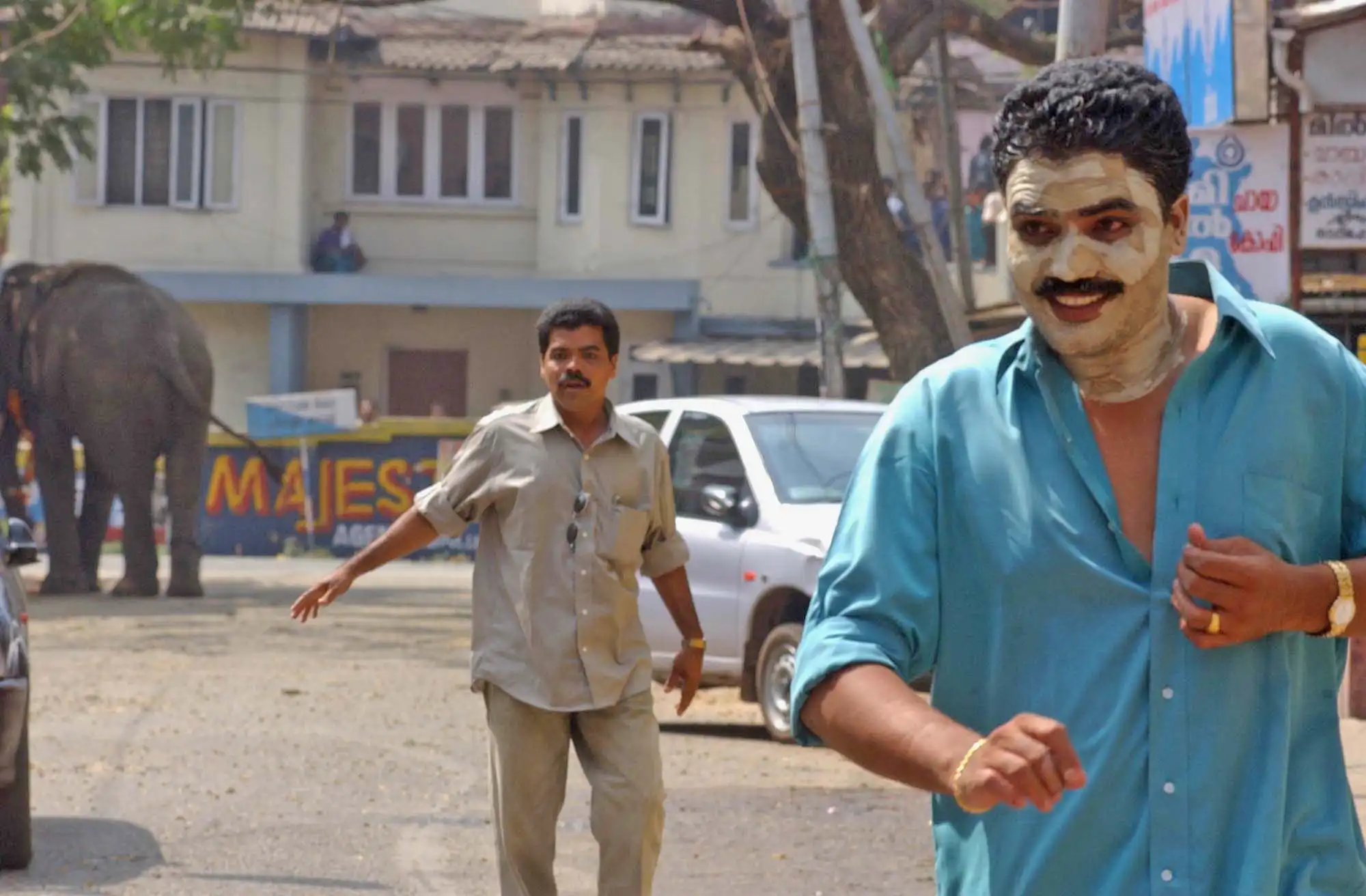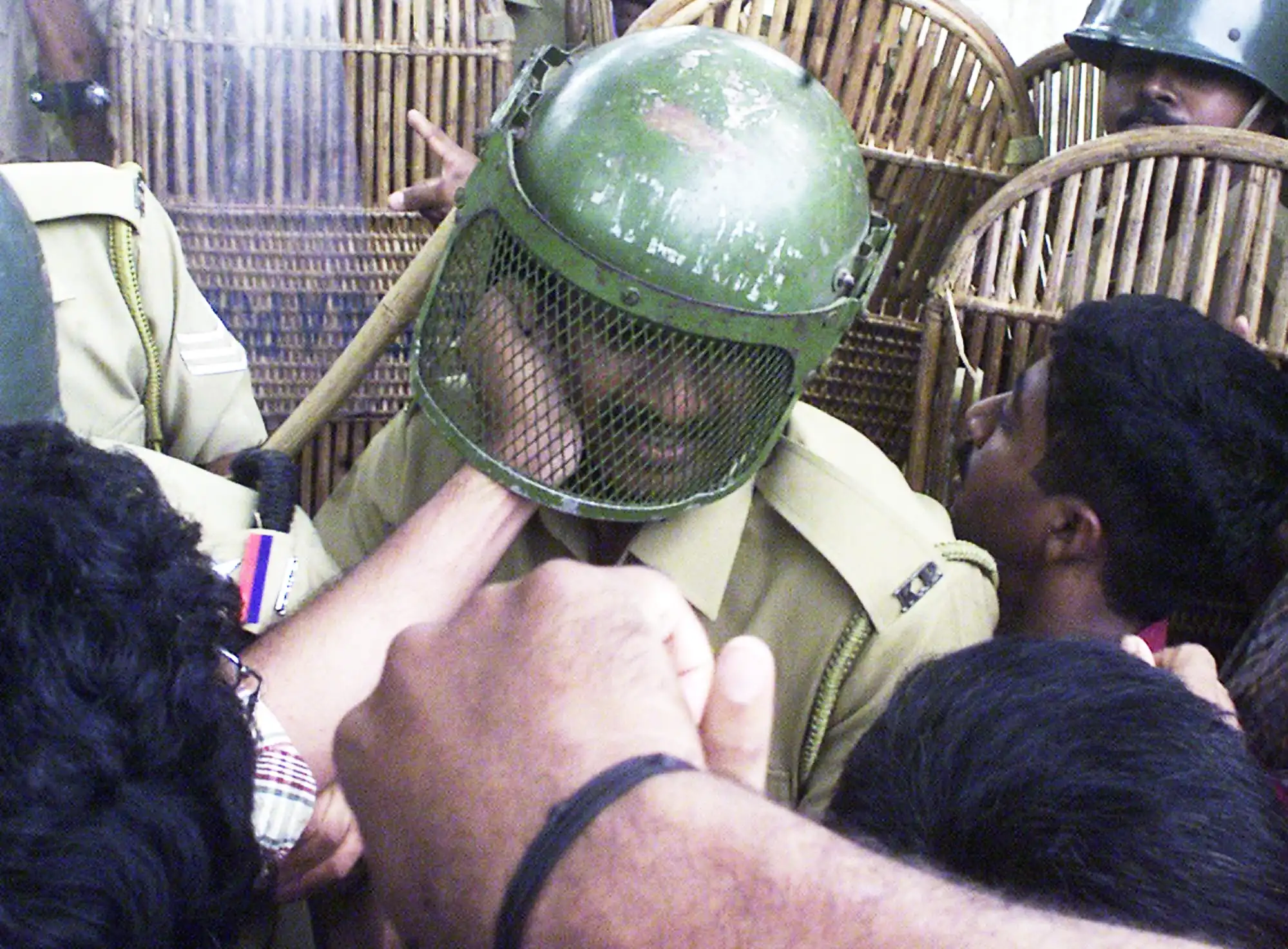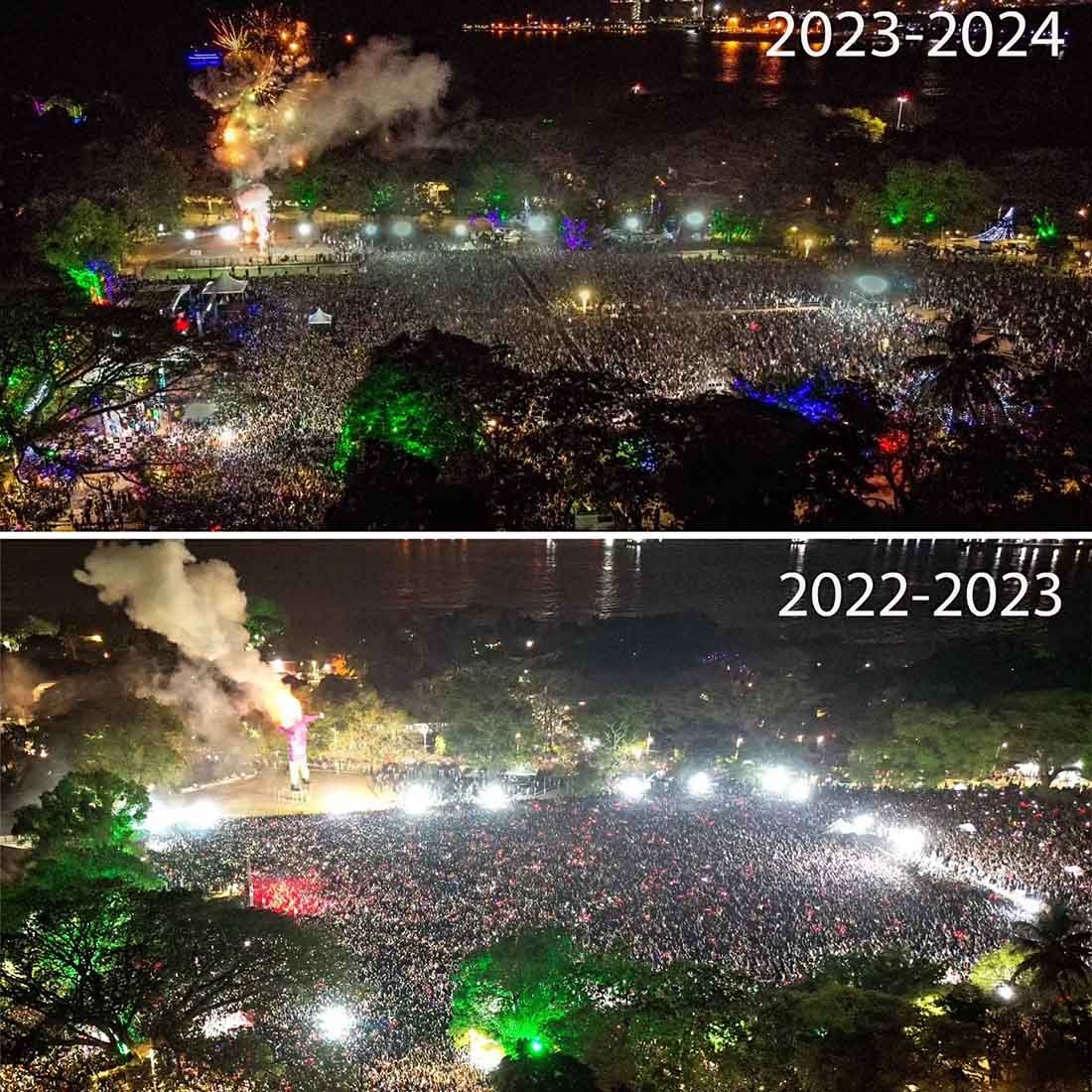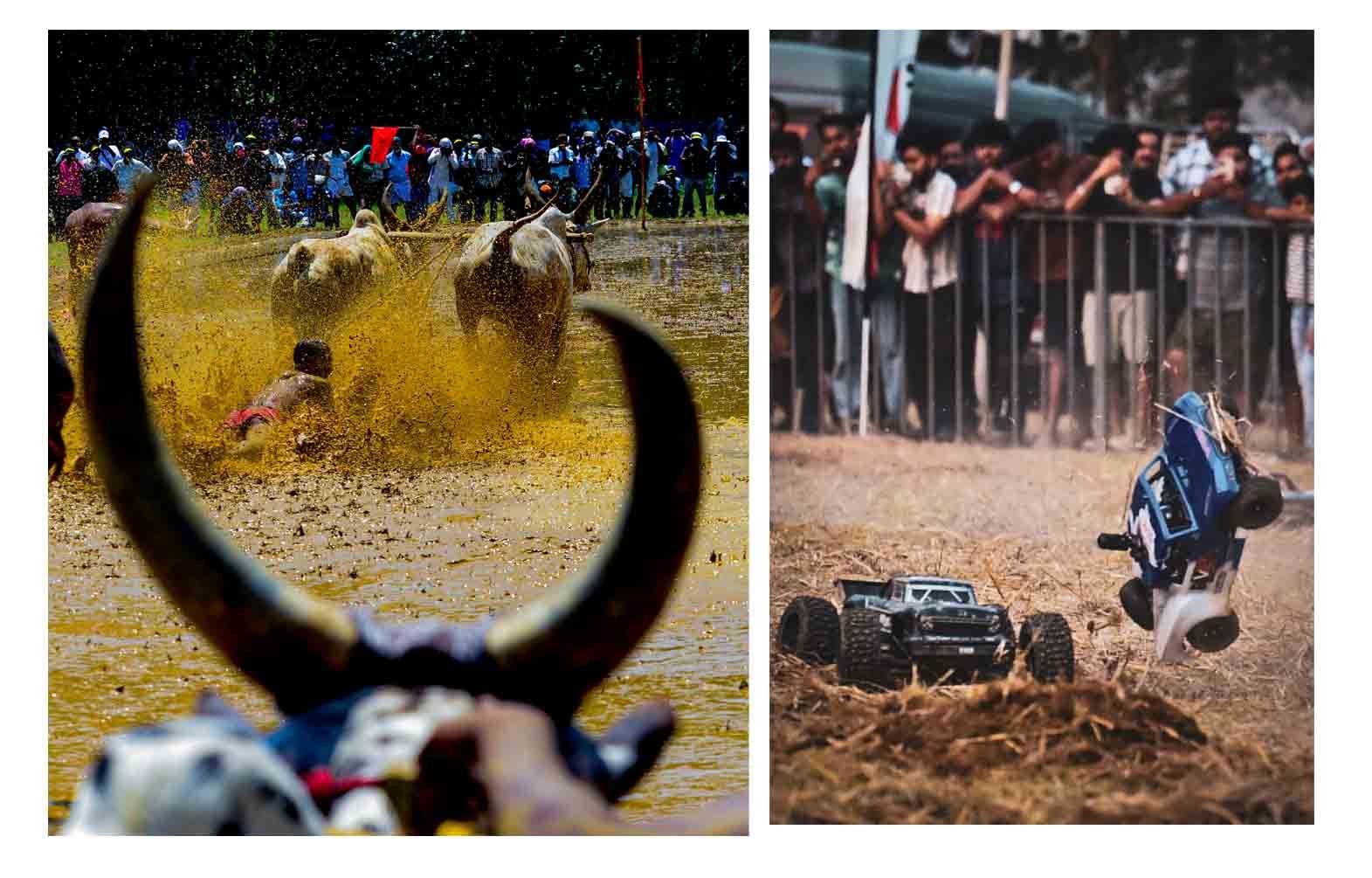Lens and Lines
A Father's Last Journey: Grief and Courage at Edappally Hundreds gathered at Changampuzha Park in Kochi to bid a tearful farewell to N. Ramachandran, 65, an Edappally resident and Gulf expatriate, who lost his life in the recent Pahalgam terrorist attack. Travelling with his wife Sheela, daughter Aarati, and young grandchildren when the tragedy struck, Ramachandran became a target while the terrorists spared the women and children. Sheela, recovering from a recent heart surgery, had stayed back in the car during the attack. She boarded her flight home unaware that her husband — no longer alive — was traveling in the same aircraft's cargo hold. It was only upon reaching Kochi that the devastating truth was finally broken to her. By early morning, Ramachandran’s body was placed for public homage at Changampuzha Park, a familiar spot where he had once been a quiet presence among the community. Sheela, despite her frailty, stood beside her husband, joined by her children and grandchildren, as streams of mourners filed past to pay their respects. Some offered flowers, others offered tears — and many simply reached out to console the grieving family in silence. By 9 a.m., Minister P. Rajeev approached Sheela with a quiet word: the crowds were swelling, and a slight delay was inevitable. The family, composed and calm, simply nodded. And then, as if drawn by some unseen force, Sheela and Aarati slowly approached the body once more. What happened next stunned everyone. Standing before the mortal remains of a husband and father, Sheela and Aarati raised their voices — not in sobs, but in something far fiercer. Three times, clear and strong, they cried out: "Vande Mataram! Vande Mataram! Vande Mataram!" "Ramachandran Amar Rahe!" Their voices, filled with pride and pain, tore through the heavy morning air. For a moment, the park froze. The media crews, the bystanders, even seasoned politicians stood in stunned silence caught off guard by the raw, untamed eruption of patriotism at a civilian funeral. Such scenes were once thought to belong only to the farewells of soldiers at distant borders daughters, wives, and sons saluting the fallen, their grief wrapped in the flag. Yet here, in a quiet corner of Kerala, the same spirit soared — fierce, proud, and defiant against the cruelty of terror. It was more than just slogans. It was a statement of a changing Kerala, a changing India — where the pain of losing a loved one to senseless violence did not just shatter hearts but also stirred an unbreakable pride. Where grief did not kneel — it stood tall and unyielding. Later, as the crowds began to thin and the formalities resumed, the echoes of Sheela and Aarati’s cries lingered in the air — a reminder that Ramachandran had not fallen forgotten. He had been saluted, not just by his family, but by the very soul of the community he had been part of.
Kashmir: Between Snowflakes and Smoke As part of the All Kerala Techies Arts Festival at Infopark, a pencil drawing competition was held at the Jain University campus, with the theme "Kashmir: Between Snowflakes and Smoke." Most of the 47 participants depicted scenes from the recent terrorist attack in Pahalgam. P. Pradeep from EY won the first prize for his powerful portrayal of the bravery of Syed Adil Hussain Shah, the horseman who was shot dead while trying to stop the terrorists. Hirosh from TCS and V.V. Rahul from UVJ Tech shared the second prize.
It was during a routine drive across the Alexander Parambithara Bridge that I came upon a sight that instantly struck a nerve: a pair of stretches—the kind often used by those with disabilities—lying beside a pair of slippers near the railing of the bridge. Something about it felt wrong. Very wrong. As a few others gathered, including a senior-ranking naval officer, it was confirmed: someone had jumped into the waters below. Moments later, we all spotted him—a man afloat, barely moving, yet unmistakably alive, with the most haunting eyes I’ve ever seen, staring upwards. People yelled from the bridge, urging him to grab on to something. He didn’t. He floated, resisting help, until the current carried him beyond the reach of my lens—or my eyes. Then, from the sky, came hope. A naval chopper, almost suddenly, descended into the scene and airlifted the man to a nearby naval hospital. Despite the efforts, he succumbed to his injuries. Teaching Note: As a journalism student or photojournalist, never underestimate the power of being present and observant. Stories often unfold in real time. Your instincts—paired with compassion, ethics, and clarity—are your tools. This wasn't just a report; it was an experience. Sometimes, the camera captures less than the heart does.
"A Picture That Sparked an Uproar: The 1990 Sabarimala Incident" As a trainee photographer in 1990, I had no idea that a single image could shake the system. What I captured that day at Sabarimala Temple turned into a nightmare for the police force and led to an unprecedented government response. The photograph showed policemen misbehaving with devotees, pushing and shoving them as they lined up for darshan of Lord Ayyappa. Once published, the image caused an outcry in the legislative assembly, leading to a political storm. The government was forced to act, sending the entire police contingent for retraining, a rare disciplinary action at the time. This was a defining moment that taught me the power of photojournalism—a single frame can hold authorities accountable, stir public sentiment, and demand change. #Photojournalism #Sabarimala1990 #PowerOfPictures #AccountabilityThroughImages #JournalismMatters
Gaps of Neglect: A Visual Investigation into Urban Infrastructure Hazards" Introduction: The Role of Visual Journalism in Public Awareness Photojournalism is not just about capturing moments; it is about documenting reality in a way that sparks conversation and compels action. A well-structured photo story can highlight social issues that often go unnoticed in daily life. This sequence of images does just that—it exposes the overlooked dangers posed by broken slabs and poorly maintained sidewalks, affecting both pedestrians and animals. Each image in this series is not just a photograph but a testament to urban neglect, raising questions about civic responsibility, public safety, and municipal accountability. By visually dissecting this issue, we step into the role of a watchdog journalist, whose duty is to inform, engage, and push for change. Framing the Issue: Why Broken Slabs Matter Sidewalks and pedestrian pathways are integral to urban mobility, designed for safe passage. However, when these public walkways are left in disrepair, they become accidents waiting to happen. For a common pedestrian, a misstep due to a hidden gap or an unstable slab can lead to severe injuries. For animals, especially strays and cattle roaming city streets, these hazards often go completely unnoticed until an accident occurs. This series follows a comparative approach, documenting similar infrastructural failures across different locations to illustrate that this issue is not isolated to one city, but a widespread concern. Case Studies: Capturing the Dangers in Different Locations 📍 Trivandrum: The Invisible Peril The first image in this sequence, taken from Trivandrum, showcases a fractured pavement with large gaps, exposing pedestrians to serious tripping hazards. The uneven surface and loose slabs are particularly dangerous for children, elderly citizens, and people with disabilities, who may struggle to navigate such pathways. 📍 Kochi City: A Step Away from Disaster The second image, taken from Kochi, captures another severely damaged walkway—a broken slab that leaves a gaping hole in the sidewalk. These urban blind spots can result in unexpected falls, often leading to injuries that go unreported. Despite thousands of commuters using these paths daily, such hazards remain ignored due to delayed or absent municipal intervention. 📍 Thoppumpady, West Kochi: The Unseen Victims The third image, taken in Thoppumpady, West Kochi, tells a more heart-wrenching story. A buffalo, likely foraging for food, finds itself trapped in a deep pavement gap. Unlike humans, animals do not recognize such hazards, making them even more vulnerable to poorly maintained infrastructure. While injured pedestrians can report incidents, animals have no voice in this discourse, making it all the more critical for journalists to document and advocate for their welfare. Journalistic Approach: The Power of Sequential Photography For journalism students, this series serves as an example of how photojournalistic storytelling can be used to highlight an issue through: Contextual Framing – Each image represents a different urban setting, reinforcing that the problem is widespread, not isolated. Comparative Photography – Showing similar hazards in multiple cities strengthens the argument that infrastructure failures need urgent attention. Human & Animal Impact – The inclusion of both pedestrian and animal perspectives creates a multi-dimensional story, making the issue relatable to a wider audience. Call for Action – A photo story should not just inform but provoke change. A structured, fact-based narrative like this one can be used to urge civic authorities to take corrective action. Conclusion: The Role of Journalism in Public Safety This sequence of images stands as a visual petition for better urban planning and pedestrian-friendly infrastructure. It is the responsibility of local municipalities to ensure that public spaces remain safe and accessible, but journalists play a crucial role in bringing such issues into the public domain. For journalism students, this serves as an important lesson in using photography as an advocacy tool. Capturing an issue is just the beginning—presenting it with compelling storytelling, backed by facts and a call for accountability, is what makes it impactful. Through thoughtful, persistent, and ethical reporting, journalists can be the catalysts for systemic change. 📝 Final Takeaway: A single image can tell a powerful story, but a sequence of well-framed, thematic images can build a movement. #JournalismForChange #Photojournalism #PublicSafety #Kochi #Trivandrum #UrbanNeglect #ThePowerOfPictures
"From Staged Frames to Signature Shots: The Evolution of Festival Photography" Years ago, covering district and youth festivals followed a traditional method—winners were posed against a backdrop behind the stage, a practice that saved film and avoided accusations of photographers signaling judges. With time, photojournalists transitioned to live-action coverage, painstakingly selecting the winners from negatives. Eventually, a new trend emerged—capturing winners at iconic district locations in dynamic action shots, celebrating both the art form and the place. This image marks that evolution, showcasing the Parichamuttu Kali winners performing with the majestic Palakkad Fort as their backdrop, taken during the State Youth Festival in Palakkad. A moment where tradition, storytelling, and photography merged. #YouthFestival #CulturalHeritage #ParichamuttuKali #PalakkadFort #FestivalFrames
A heart-wrenching moment as a job seeker falls at the feet of an army invigilator, pleading after narrowly missing the running race timing test by mere milliseconds. His desperation echoed the struggles of many aspirants chasing their dreams. However, what followed was a remarkable turn of events—after the news was published, people from different walks of life reached out, offering him job opportunities, eager to help. Despite our efforts, the army remained unresponsive regarding his performance in other tests. A moment that began in despair but ultimately restored faith in humanity. #HopeInDespair #JobSeeker #RaceForAChance #PowerOfMedia
As a photojournalist, I’ve witnessed my fair share of madness—some tragic, some absurd, and a few that straddle the fine line between both. One such day, laughter and grief mingled in a way I never imagined. It was the kind of day where death and dark humor stood side by side. An irate elephant had turned on its own mahout, swinging him like a rag doll before trampling him to death. The crowd was frozen in horror, unsure whether to flee or pray. Then, as the elephant momentarily turned its attention elsewhere, chaos broke loose. That’s when I noticed people sprinting out of a nearby shop. At first, I thought nothing of it—just another wave of terrified bystanders making a run for it. But then, in the blur of motion, one man caught my eye. His face was completely powdered white. My first thought? A painter caught in the wrong place at the wrong time. But no, it was far more bizarre than that. The man had been in the middle of a facial at a beauty parlor when the elephant’s rampage began. Trapped inside, he had no choice but to wait until the moment was right to escape. And when he finally did, he burst onto the street in full spa treatment mode—a face mask still perfectly intact, looking more ghostly than groomed as he bolted for safety. The absurdity of the sight was too much. In a moment so charged with grief, fear, and adrenaline, a few of us, including other reporters, found ourselves unable to hold back our laughter. We had just witnessed an elephant claim a life in the most brutal fashion, yet here we were, cackling at the sight of a man fleeing for his life with a half-done beauty routine. It was wrong, but it was real. That day, we cried for a life lost. And we laughed—hard—for the ridiculousness that life sometimes throws our way. As a journalist, you don’t get to choose the emotions the world presents to you. You just capture them all.
As a photojournalist, I’ve had my fair share of encounters with the police. Some amusing, some frustrating, but all educational in their own way. One such experience, however, had a delicious twist of retribution—served not by me, but by fate itself. It all began one evening on Willingdon Island, near ATS Premium Bar. I had just wrapped up work and, admittedly, had a drink. As I was making my way home on my bike, a police jeep flagged me down. The officer asked if I had been drinking. Knowing better than to lie, I admitted it. That honesty cost me—I was fined for driving after consuming alcohol, and my bike was impounded at the island police station. They were kind enough to let me take an auto home and asked me to return the next day to pay the fine and complete the documentation. When I arrived at the station the next morning, I was greeted by a familiar face. The officer on duty was someone I had seen numerous times at press conferences—one of those self-important men in uniform who loved basking in the glory of their ‘heroic’ criminal catches. As journalists, we had dutifully clicked away and published their tales of bravado. But today, the roles were reversed. I was the one under their authority. After handing in my paperwork, I instinctively took a seat in the visitor’s chair, expecting a routine process. That’s when the officer turned to me with a smirk and said, “You may be known to me, but now you are an offender. You have no privileges here.” The words stung, not because they weren’t technically true, but because they carried an unmistakable tone of intimidation and an air of unnecessary superiority. I could sense the pleasure he took in putting me in my place, as if he had been waiting for this moment. I let it slide. After all, there was no point arguing with authority. But fate has a way of settling scores. A few weeks later, I was on assignment in front of the Taluk Office, where a scuffle had broken out between the police and student union members. As always, my camera was ready, capturing the raw, unfiltered moments of the chaos. And there it was—the perfect shot. Through the mayhem, I caught an unknown fist landing a well-aimed punch right between the helmet and face of none other than the very officer who had ‘put me in my place’ that day at the station. The irony was exquisite. The next day, as the photograph made its way around the newsroom and likely through police circles, I could only imagine his embarrassment. He, who had once taken pleasure in making me feel small, now had to endure the sniggers of his own colleagues. Retribution, indeed. The lesson? Power dynamics shift when you least expect them. And as a journalist, your camera will always be the ultimate equalizer.
Aerial View Confirms Partial Success of Police Crowd Management Strategy The aerial image serves as proof that the police's decision to divide the crowd into four designated sectors was successful to a certain extent. When comparing this year’s image with last year’s, the difference is evident. By effectively managing the crowd, the organizers were able to reduce dangerous congestion and ensure better safety and order.
Gridlock Chronicles: A Bird’s-Eye View of My Traffic Trauma They say every photographer has a moment when inspiration strikes out of nowhere. Mine struck in the middle of a traffic jam—literally. I had set out on a mission, camera in tow, to capture a different scene altogether. But fate (and a few hundred bumper-to-bumper vehicles) had other plans. The road was so jammed that we weren’t just moving slowly; we were evolving into fossils, one inch at a time. Every five minutes, the entire queue would celebrate a grand one-foot victory, as if we were part of some slow-motion parade no one signed up for. As I sat there contemplating my life choices, a thought hit me—why not see the chaos from above? Enter my drone, my loyal eye in the sky. As it soared over the sea of vehicles, I finally saw the full magnitude of what I had become a part of. It was a majestic disaster—an unintentional parking lot stretching as far as the eye could see. Realizing I had unknowingly become a permanent resident of Container Road, I made the executive decision to escape. A quick detour through Cheranalloor later, I was back in the city, free and breathing. The moral of the story? Sometimes, the best pictures come when you least expect them… and the best routes are the ones that don’t involve five-minute one-foot sprints. PS: If you were stuck in that traffic jam and saw a drone hovering above, don’t worry—I was suffering with you. I just happened to have a better view of our collective misery!
In 1990, I was given the opportunity to cover this event. Excitement coursed through my veins as I positioned myself, camera ready, waiting to frame a moment of history. The procession moved with its usual grace—majestic yet intimate, a bridge between the past and the present. But then, something unexpected happened. Out of nowhere, the heavens opened. A sudden downpour drenched the streets, the procession, and me. The crowd gasped, and for a fleeting second, everything stood still. The rain was not just unexpected; it felt like a sign, an omen of sorts. And in that moment, as I looked through my lens, something in the Maharaja’s demeanor struck me. He walked on, unfazed by the rain, yet there was a solemnity in his expression, an unspoken acknowledgment of something deeper. And somehow, inexplicably, I felt that he knew this would be his last Arattu. There was no announcement, no indication—just a feeling that settled in my chest as I clicked frame after frame, knowing these images carried something beyond the visible. That year, as the raindrops mixed with temple chants, as history soaked into the very ground we stood on, I learned something crucial about photojournalism. We are not just observers. We are witnesses to history. Lessons from the Lens 1-nticipate the Unseen 2-Great images are rarely planned. They happen in moments of unpredictability. Be ready. Watch not just the event, but the emotions, the unspoken words in people’s eyes. 3-Capture More Than Just the Surface A good photograph captures a scene; a great photograph captures a story. The difference lies in what you choose to see beyond what is visible. 4-Be a Silent Participant, Not Just an Observer Blend in. Become part of the environment without disrupting it. When people forget the camera is there, that’s when the most authentic moments emerge. 5-Trust Your Instincts That day, something told me to keep clicking, to not just focus on the grandeur but also on the subtlety of the Maharaja’s expression. Trust the gut feeling that tells you where history is about to be made. 6-Respect the Moment Some images are about documentation; others are about reverence. Know the difference. As photojournalists, we hold power—the power to immortalize, to honor, and to preserve legacies. Use it wisely. That Arattu in 1990 was the last one Chithira Thirunal Balarama Varma ever attended. He passed away in 1991. And even today, when I look at those photographs, I don’t just see an event—I see the end of an era, a quiet farewell written in raindrops and royal footsteps. .
Kakoor Kalavayil: A Race Against Time Photojournalism is more than capturing moments; it’s about preserving traditions, questioning change, and documenting the pulse of society. My recent assignment at Kakoor Kalavayil, the vibrant agricultural festival once synonymous with the cattle race, was a reminder of how time reshapes culture. I remember the first time I photographed this event years ago. The festival ground, a vast stretch of paddy fields, would transform into a battleground where farmers and their prized bulls thundered through the slush. These weren’t just races; they were a celebration of Kerala’s agrarian spirit, an event where farmers, drenched in mud and sweat, took pride in their animals’ strength and agility. Some came from distant villages, having prepared for months, their bulls adorned with bells and garlands, their eyes glistening with excitement. The air would be thick with the scent of wet earth, the roars of the crowd, and the rhythmic splashes of hooves against waterlogged fields. But then, the world changed. Protests emerged, questioning the ethics of these races. Animal lovers raised concerns, and soon, the law stepped in. Cattle races were banned, leaving a void in the festival that had defined generations. The fields, once alive with the power of bulls charging forward, fell silent. This year, on March 8, I returned to Kakoor Kalavayil with my camera, expecting a familiar sense of nostalgia. What I saw instead was a different kind of race—one fueled not by muscle but by technology. RC (remote-controlled) cars zipped across the very fields where bulls once sprinted. Kids and enthusiasts cheered as these machines skidded through the mud, their tires throwing up the same splashes that hooves once did. It was thrilling, a spectacle of modernity, and yet, a pang of sadness settled in my chest. Was this progress? Had we truly preserved the spirit of the festival, or had we replaced a piece of our heritage with something less organic, less connected to the land? The cattle race had its flaws, no doubt. But for the farmers, it was never just a race—it was a tradition, a showcase of their bond with the land and the animals they raised with devotion. Now, those same fields bore witness to machines instead of life. As I stood there, camera in hand, I realized photojournalism isn’t just about freezing moments in time—it’s about asking questions. How do we balance tradition and ethics? Can modernity truly replace the raw, earthy essence of our past? Where do we go from here? I don’t have the answers, but my photographs from that day tell a story—a story of change, loss, and adaptation. Perhaps, like Kakoor Kalavayil itself, we must continue to evolve while ensuring we don’t erase the past entirely. Because in the end, festivals are not just about what happens in the fields; they are about the emotions they stir within us.





